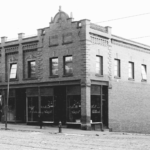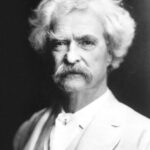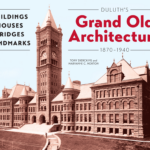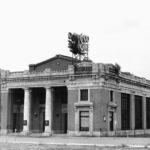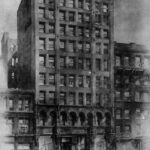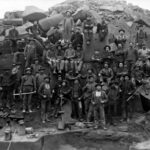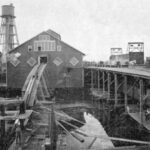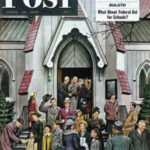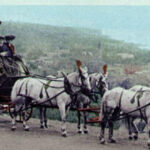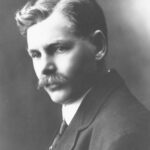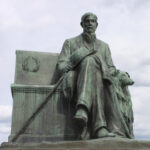Search results for: St. Louis Hotel
January 13: Fire destroys Duluth’s St. Louis Hotel
On this day in Duluth in 1893, fire swept through the St. Louis Hotel, killing two guests. According to the Duluth News Tribune, the fire started at 10:40 with a gas explosion in the sub basement followed by a “rush of thick suffocating smoke which spread through the whole building almost in a single moment”…
Read MoreSt. Louis Hotel(s)
First: 330 West Superior St. | Architect: George Wirth, Oliver Traphagen | Built: 1882 | Lost: 1893 1888 Addition: 318 West Superior St. | Architect: Oliver Traphagen | Lost: 1893 Second: 318-330 West Superior St. | Architect: Traphagen & Fitzpatrick | Built: 1894 | Lost: 1932 After fire destroyed the Clark House Hotel in 1881, the Duluth Daily Tribune…
Read MoreApril 9, 1887: Ground is broken for Duluth’s Spalding Hotel
On this day in Duluth in 1887, ground was broken for the construction of the Spalding Hotel at 424 West Superior Street. It took two years for tradesmen to complete the massive, two-hundred-room Spalding Hotel, built to rival the St. Louis Hotel one block east. Although the hotel’s investors included such prominent Duluthians as R.…
Read MoreAstoria Hotel (aka Loeb Block)
102–108 East Superior Sreet | Architect: John J. Wangenstein | b. 1905 | Extant Like the Metropole, Louis and Sam Loeb built the Astoria Hotel and John Wangenstein designed it—and trouble marked its early years. When it opened, however, the Duluth News Tribune boasted of its fifty-six “splendidly furnished” rooms and a buffet it considered…
Read MoreSt. Louis County Courthouse (1909)
100 North Fifth Avenue West | Architect: Daniel Burnham | b. 1909 | Extant In 1883 St. Louis County constructed a modest courthouse in Duluth at 611 East Second Street on land donated by Judge J. D. Ensign. The building was designed to be temporary, and the population boom of the 1880s had rendered it…
Read MoreSt. Louis County Jail (1923)
521 East Second Street | Architects: Holstead & Sullivan | b. 1923 | Extant When the struggle to build a new St. Louis County Courthouse commenced in 1904, it also touched off a debate about replacing the 1889 St. Louis County Jail and Sheriff’s home. Just 15 years old, the jail was considered insufficient in…
Read MoreThe Last Legal Hanging in St. Louis County
Like too many tragedies, this story begins with love. A man loved a woman. The woman he loved stopped loving him back. And the woman had to die. The man was Charles Ernest Lafayette Henderson. He was thirty-four years old and a veteran of the Spanish-American War. He was born and raised in Charlotte, North…
Read MoreHolland House Hotel
501 West Superior Street | Architect: Bray & Nystrom | Built: 1910 | Lost: ca. 1965 Like the Lenox Hotel, the Holland House was built to take advantage of the nearby Soo Line passenger train station, which opened one block east of the hotel in October 1910, three months after the hotel first started receiving…
Read MoreLester Park Hotel
6003 London Road | Architect: Oliver Traphagen | Built: 1889 | Lost: 1897 In 1888 Duluth’s Lakeside Land Company, which developed Lakeside and Lester Park, advertised that it planned to build a “mammoth hotel” outfitted with “all the latest improvements.” Despite this announcement and architect Oliver Traphagen’s grand original design, the hotel was a rather plain, two-and-a-half story wood-frame…
Read MoreSpalding Hotel
424 West Superior Street | Architect: James J. Egan | Built: 1889 | Lost: 1963 The Spalding Hotel took its name from William Spalding, who led a group of prominent Duluthians including Roger Munger, Guildford Hartley, Owen Fargusson, and Luther Mendenhall to invest in the creation of a first-class hotel that would eclipse the St. Louis one…
Read MoreForest Hill Cemetery (est. 1890)
All three of Duluth’s Protestant cemeteries sit at the edge of town, reflecting their beginnings as a product of the Rural Cemetery Movement. Historically, graveyards were placed in town greens, surrounded by wooden fences that often were disrupted by grazing livestock. Death was an unpleasant and necessary evil, but it was still close by and…
Read MoreJanuary 28: 1889: Fire destroys Duluth’s Grand Opera House
On this day in Duluth in 1889, the Grand Opera House was destroyed by fire. At 1:45 a.m. Thomas Lannigan was passing the landmark 1883 building—four stories of light-colored brick and sandstone with terra cotta trim and a roof executed in four shades of purple the Duluth Daily News called “Duluth’s “Pride and Joy”—when he…
Read MoreDecember 18, 1905: Duluth Ski Club tests Duluth’s first ski jump—in Hunters Park
On this day in Duluth in 1905, John Mangseth and four other members of the new Duluth Ski Club tested their ski jump at Duluth Hill in Hunters Park for the first time. Forty-two Duluthians had answered the call at Duluth’s St. Louis Hotel on November 21, 1905, organizing as the Duluth Ski Club. Its…
Read MoreNovember 24, 1920: Superior bank robbery suspects arrested in Omaha
On this day in 1920, suspects in a Superior bank robbery were captured in Omaha, Nebraska. The alleged bandits were suspected of holding up the Superior State Bank on November 16, making off with $7,070—but it could have been much more if it weren’t for quick-witted bookkeeper Nell Mulligan. Mulligan, 22, had defied the robbers…
Read MoreMarch 1, 1932: Royal D. Alworth announces plans for Duluth’s Medical Arts Building
On this day in Duluth in 1932, Royal D. Alworth announced he would be constructing a Medical Arts Building in Duluth. Alworth, the son of Duluth pioneer Marshal H. Alworth, followed his father into business in mining and real estate ventures, promoting and operating manufacturing and industrial properties. The elder Alworth already had a grand…
Read MoreJanuary 7, 1906: First Duluth Ski Club event at “Duluth Hill”—in Hunter’s Park
On this day in Duluth in 1906, 300 people gathered to witness the first event held by the Duluth Ski Club: a ski jumping exhibition on their brand new jump, named “Duluth Hill.” Forty-five Duluthians first organized the club at the St. Louis Hotel on November 21, 1905. Club founders—including noted Duluth architect John J.…
Read MoreJune 28 , 1886: Mark Twain visits Duluth
On this day in Duluth in 1886, Mark Twain arrived on the steamer Empress of India from Buffalo, New York, accompanied by his daughters. He was on his way to visit his mother in Keokuk, Iowa. He stayed at the St. Louis Hotel, but evaded Duluth reporters. Only one story ran about his visit, with…
Read MoreDuluth’s Grand Old Architecture: Contents
Curious as to what you’ll find in the pages of our forthcoming book, Duluth’s Grand Old Architecture? Here’s a list of the book’s chapters and their contents: 1. PUBLIC BUILDINGS 1: MUNICIPAL MONUMENTS Duluth City Hall (1889) Duluth City Hall (1929) Duluth Civic Center Duluth Fire Department Engine House No. 1 (1889) Duluth Fire Department…
Read MoreFebruary 11, 1894: Fire destroys Duluth’s first Board of Trade building.
On this day in Duluth in 1894, fire destroyed the Board of Trading building that had stood at 302–304 West Superior Street since 1885. The fire was first discovered at about 12:20 in the afternoon. Trade commissioners attempted to extinguish the blaze, but the building’s hose produced no water. When firefighters arrived, they found nearby…
Read MoreU.S. Weather Bureau Station
631 W. Seventh St. | Architects: Harding & Upman | b. 1903 | Extant The federal government began tracking temperatures and Lake Superior ice conditions as early as 1855. Fifteen years later Congress established a government weather service as an arm of the War Department. Its first Duluth office—one of just twenty-four in the nation—was…
Read MoreJanuary 1, 1904: Official opening of Duluth’s new weather station
On this day in Duluth in 1904, the new Duluth Weather Station opened at what is now 631 West Skyline Parkway. When first established in 1870, the Weather Bureau was located in the Edmonds (Miller) Block at Lake Avenue and Superior Street. It moved to the St. Louis Hotel in 1882, then two years later…
Read MoreMedical Arts Building
324 West Superior Street | Architect: Ernest R. Erickson | Built: 1933 | Extant When Marshal H. Alworth built the Alworth Building in 1910, newspapers raved about its modern design and the fact that it had been constructed in a very short time—nine months from groundbreaking to grand opening. In 1933, when Alworth’s son Royal…
Read MoreProvidence Building
332 West Superior Street | Architects: Wagenstein & Bailey | Built: 1895 | Extant Two 19th-century business blocks anchor the lower side of Superior Street’s West 100 block, the Lonsdale and Providence buildings. Both were designed by prominent Duluth architects and first constructed in 1895, and later several floors were added to each. But while…
Read MoreTwain: “The Coldest Winter I Ever Spent…”
For generations people have quoted Mark Twain as having said, “The coldest winter I ever spent was a summer in Duluth.” As far as anyone can tell, he never said nor wrote the statement. According to Quote Investigator, the quotation may go back to 18th-century London. In 1879 England’s Horace Walpole quotes 1 8th-century British actor…
Read MoreMiles Block
19 West Superior Street | Architect: George Wirth | Built: 1884 | Lost: ca. 1910 Inventor, real estate investor, and barber Alexander Miles moved to Duluth with his wife, Candace, in 1875; she set up a dressmaking business while he established himself as Duluth’s popular “enterprising and artistic tonsorial artist,” as described by the Duluth News Tribune. He…
Read MoreDuluth Grand Opera House
333 West Superior Street | Architect: George Wirth | b. 1883 | Lost: 1889 Duluth’s first theater, a ramshackle affair built by violent gambler George “Big” Hanson in 1869, went by a number of names, including the Theater Shed, the Pine Shed, and the Political Wigwam. The barnlike structure hosted everything from the city’s first…
Read MoreChester Park
When first established in 1889, Chester Park, created along with Lincoln Park to form the bookends of the boulevard, extended along both sides of Chester Creek between East Fourth Street and today’s Skyline Parkway. The area above the parkway, called Upper Chester, was added to the park in 1920. Together these parcels of land tell…
Read MoreThe Duluth Ski Club
Ski jumping in Duluth can trace its history back to January 1, 1905, when the Duluth News Tribune called on Duluthians to organize a ski club to participate in the “Norwegian sport” of skiing. Nordic skiing and ski jumping as sports were fairly new concepts, and the newspaper felt compelled to describe a ski. “The…
Read MoreOliver G. Traphagen
Oliver Greene Traphagen (1854–1932), a native of Tarrytown, New York, moved to St. Paul about 1880 and worked as a carpenter for prominent architect George Wirth. By 1882 Traphagen moved to Duluth to supervise construction of buildings designed by Wirth, including the Grand Opera House and the Metropolitan Block. Wirth and Traphagen became business partners…
Read MoreGeorge Wirth
George Wirth (1861–1935), a native of Bavaria, Germany, first came to the U. S. in 1869 to study architecture at Cornell College. In 1879 he opened a practice in St. Paul, where he designed many significant homes and commercial buildings. He hired Oliver Traphagen as a carpenter and sent him north to oversee the construction…
Read MoreCharles A. Lanigan
Looking at old maps of Duluth can sometimes give a sense of the optimism that pervaded developers’ hearts back around the turn of the 20th century. They often platted streets that were never built, and perhaps only the sharp-eyed hiker or map enthusiast may find the remnants of those grandiose plans. In the upper Riverside…
Read MoreMelvin Forbes
Melvin Forbes was born in Bridgewater, Massachusetts, in 1848 and came to Duluth in 1870 to run a book and stationery store, but soon turned his attention to the grain trade. By 1874 he was working as a bookkeeper for George Spencer & Co. and later became a partner in the firm. In 1882 George…
Read MoreAlexander Miles
Users of early elevators were responsible for opening and closing the doors manually, sometimes neglecting to close the doors and creating a hazardous situation with the shaft exposed. Duluthian Alexander Miles solved this problem by inventing an improved mechanism to open and close elevator doors automatically when the elevator arrives or departs the floor. This…
Read MoreArchitecture #2: Commercial Buildings
General Duluth Landmark Properties Duluth Properties on the National Register of Historic Places Duluth Commercial Historic District Historic Business Blocks Office Blocks Alworth Building (1910) | 306 West Superior Street Banning Block (1872–1960) Bradley Building (1909–1979) Branch’s Hall (1870–1896) Canal Block (1889) | 340 South Lake Avenue Columbus Block (1894) | 28–30 West Superior Street…
Read MoreFebruary 24, 1858: George B. Sargent tell Bostonians of the “New West”
On this day in 1858, future Duluthian George B. Sargent gave a lecture in Boston about the “New West.” At the time Sargent was serving as Surveyor General of the United States. He was attempting to gather others to help him build a new community that would rival Chicago. To convince his listeners, he told…
Read MoreAugust 17, 1870: Fires in Duluth test new volunteer fire department
On this day in Duluth in 1870, a fire on Minnesota Point was the first call to Duluth’s newly established volunteer fire department, which was little more than a bucket brigade. The fire inside J. C. Funston’s furniture store was discovered by a Mr. Berkelman, who also resided in the building. Berkelman was only able…
Read MoreArchive Dive: Duluth’s Jefferson Brothers
Meet Duluth’s Jefferson brothers, Ernest and Robert. One of them helped plat the original streets of Duluth, built the town’s first hotel, and then went off to war and never returned. The other never stepped foot in Duluth until after the war, where he had had lost a leg, but thrived in the Zenith City…
Read MoreMay 9, 1911: Death of Pioneer Ernie Jefferson
On this Day in 1911, pioneer Ernie Jefferson died at his summer home on Bay Lake near Deerwood, Minnesota. Jefferson, namesake of Duluth’s Jefferson Street, came to Duluth in 1869. During the Civil War he had fought for the famous First Minnesota Infantry Regiment, which lead the charge on Cemetery Ridge during the Battle Of…
Read MoreDecember 25, 1914: First municipal Christmas trees in Duluth and Superior
On this day in Duluth—and across the bay in Superior—a municipal Christmas tree was raised to the delights of large crowds which had gathered to witness the events. In Duluth, a “huge spruce” was erected in the square in front of the St. Louis County Courthouse, and at 5 p.m. Mayor William Prince threw the…
Read MoreDecember 1, 1941: Former Duluth police chief killed in gun battle
On this day in Duluth in 1941, Lieutenant Oscar G. Olson of the Duluth Police Department was shot and killed during a gun battle with John Handris, who may have been experiencing a psychotic episode. Olson, along with sergeants Robert Johnson and Walter C. Johnston, had been summoned to a house at 2212 West First…
Read MoreOctober 5, 1949: Last trolley from Forbay to Fond du Lac
On this day in 1949, the trolley from Forbay to Fond du Lac made its final trip. Where the heck is Forbay, you ask? Forbay was a community located at the southernmost point of Thomson Township established by the Great Northern Power Company, predecessor to Minnesota Power, in 1905 for its hydro station workers and…
Read MoreSeptember 23, 1858: Pioneers establish Oneota—part of today‘s West Duluth
On this day in 1858 in what would become Duluth, the town of Oneota was established in what is now West Duluth. Essentially organized by the Merritt, Wheeler, and Ely families, Oneota developed along St. Louis bay at about today’s Forty-Second Avenue West. Edmund Ely arrived here first, then soon asked St. Paul’s Henry Wheeler…
Read MoreSeptember 7, 1926: NFL’s first training camp begins at Two Harbors
On this day up the shore in 1926, the NFL’s newest franchise—the Duluth Eskimos—kicked off the league’s first preseason training camp in Two Harbors. According to Chuck Frederick’s Leatherheads of the North, camp headquarters were established at Hotel Agate in Two Harbors and in the American Legion hall in the hotel’s basement. The hotel, at…
Read MoreJune 30, 1917: Duluthians get soaked before going dry
On this day in Duluth in 1917, Duluthians enjoyed their last legal dance with John Barleycorn while across the bay Superiorites prepared for his return. While national prohibition was still two years away, Duluth had voted on April 17 to go dry on July 1. Police captain Anthony Fiskett told the Duluth News Tribune that he…
Read MoreJune 21, 1902: Charles Henderson murders Ida McCormack.
On this day in Duluth in 1902, Charles E. L. Henderson brutally attacked Ida McCormick with a knife. The Duluth News Tribune headlines screamed the details: “Negro attacks former Sweetheart in Her Home in Presence of Companion, Repeatedly Cutting Her With Knife Until She Drops at His feet” and “Forces Entrance, Hides in Closet and…
Read MoreFitger Brewing Company
On November 11, 1882, Michael Fink hired August Fitger as the brewmaster of his 1881 Lake Superior Brewery along Superior Street at Sixth Avenue East. Only six months after Fink hired Fitger, the new brewer purchased half of Fink’s Lake Superior Brewery. Fitger’s friend Percy Anneke, a salesman for Milwaukee bottling company Voechting, Shape &…
Read MoreDuluth Brewing & Malting
Reiner Hoch (pronounced “hoke”) fell into brewing when his parents settled in Milwaukee after emigrating from Prussia, Germany, where he was born in 1852. Two of Hoch’s brothers followed the same path, as did Carl Meeske (pronounced “mess-key”), born in Germany in 1850—and two of Meeske’s brothers, Otto and Gustav. Hoch and the Meeske brothers…
Read MorePeople’s Brewing Company
In October 1906 the Duluth News Tribune reported that a third brewery was coming to the Zenith City, and its investors were looking at property in West Duluth. It was to be called People’s Brewing Company. Over the decades many have come to believe that the brewery was born of socialist ideas brought to Northeastern…
Read MoreThe Pioneer Breweries of Duluth & Superior
Sidney Luce never intended to live in Duluth. In fact, the city didn’t even exist when he first arrived at the Head of the Lakes in 1856. He had traveled from Ohio to Superior, Wisconsin, to look after some investments “without any intention of remaining any length of time,” according to Luce himself. Luce ended…
Read MoreCreating Canal Park (1975–1985)
Mayor Boo resigned his post to become the WLSSD’s director in 1974. City council president Bob Beaudin served out Boo’s term. Like two of his predecessors, Beaudin was a veteran employee of the Minnesota Steel Company plant. Beaudin’s daughter Shannon later explained to newspapers that he entered politics because “there wasn’t enough talk about jobs.”…
Read MoreReorganization, War, Fire & Flu (1911–1919)
In 1911 Duluth mayor Marcus Cullum proposed changing the political system hat had thrice elected him mayor. Cullum felt the mayor-council government gave the mayor too much power. Instead, he had become a proponent of government by a city commission, a new, nationally popular system then considered more efficient and better for the laboring class.…
Read MoreExpanding Borders (1888–1895)
The reborn city of Duluth hit the ground running, and its citizens kept Sutphin their mayor through 1890. The new city charter again called for a mayor-council system and doubled mayoral terms to two years. During Sutphin’s tenure Duluth improved its streets and sewers and built a city hall, police headquarters, and a new fire…
Read MoreNorth Shore Copper Rush (1854–1858)
While the French referred to Lake Superior’s far-western end as Fond du Lac (Bottom of the Lake), English-speaking explorers had an entirely different perspective. They called it the Head of the Lakes, a phrase later used to collectively identify Duluth and Superior, Wisconsin. The position of those communities on the opposite banks of the…
Read MoreWhy Duluth Dug Its Ship Canal
Duluth’s aerial bridge has been an iconic symbol of the Zenith City of the Unsalted Seas since it first began operating in April 1905. But Duluth would have no such bridge if it didn’t also have a canal to cross—and it wouldn’t have needed to dig a canal at all if Minnesota Point weren’t lying…
Read MoreMarch 13, 1856: Birth Robert B. Whiteside
On this day in 1856, future Duluthian Robert B. Whiteside was born in Ontario, Canada. He was educated in public schools before going to work in lumber camps while still a boy. He arrived at the head of the Lakes in 1881, working as a foreman in a lumber camp on Northern Wisconsin’s Black River.…
Read MoreLoeb House
2407 E. Fifth Street | Architect: Francis H. Fitzgerald | Built: 1923 | Extant Scottish-born architect Francis Fitzgerald came to Duluth in 1913 after working for a number of prestigious firms, including Chicago’s D. H. Burnham & Company. His few known Duluth works include the 1921 Ridgeview County Club and this L-shaped, two-story stucco-covered Mediterranean…
Read MoreMStP&SSM (Soo Line) Union Station
602 West Superior Street | Architects: Bell, Tyrie & Chapmen, Architects | Built: 1910 | Lost: 1972 The Wisconsin Central Railroad began planning its Duluth passenger terminal and yard as early as 1906, eventually deciding to build below Superior Street between Sixth and Eighth Avenues West in the heart of Duluth’s Bowery. Most of the…
Read MoreZion Evangelical Lutheran
2431 W. Third St. | Architect: Oliver Traphagen | Built: 1890 | Lost: 1952 During Duluth’s population explosion in the 1880s and 1890s, the West End became home to many immigrants who found jobs as unskilled laborers at nearby grain elevators, flour and lumber mills, and docks on Rice’s Point and along the St. Louis…
Read MoreFinnish Work People’s College
Spirit Lake Hotel/Työväen Opisto | 402 S. 88th Ave. W. | Architect: Unknown | Built 1888 | Lost, 1911 1911 Finnish Work People’s College | 410 S. 88th Ave. W. | Architect: Frank A. Johnson | Built 1913 | Lost, 1917 Finnish Work People’s College | 402 S. 88th Ave. W. | Architect: Unknown |…
Read MoreStowe Elementary
132 East McCuen Street | Architect: unknown | Built: 1892 | Lost: Date Unknown A consortium of investors lead by Charles Lovett incorporated the Village of New Duluth in 1891, two years after he had first visited the area in 1889 and recognized it as “the largest body of level ground on the Minnesota side…
Read MoreHow Duluth’s creeks got their names
NOTE: This was originally published as a “Northlandia’ column in the Duluth News Tribune on August 5, 2020 and was updated in January, 2021. Original posting here. Special thanks to Heidi Bakk-Hansen, who previous work for Zenith City Online tracing local place names (linked to below) has greatly informed this article.] Cathy P. of…
Read MoreThe Tunnels of Subterranean Duluth
The great cities of Europe are often known for what goes on below their streets as above—the London Underground, the vaults of Edinburgh, the catacombs of Paris. Duluth has its own subterranean features, though they are much less on the minds of its people. Many of Duluth’s downtown buildings are connected below street level, and…
Read MoreDuluth’s Lack of Diversity
While from 1870 to 1920 Duluth was as much a melting pot as any other industrial city on the Great Lakes, today it could hardly be described as ethnically diverse by modern standards. The population of people of color has never been large. While the Treaty of 1854 ceded land in Minnesota adjacent to Lake…
Read MoreDuluth’s Gateway Urban Renewal Program
By the 1890s, a section of downtown Duluth adjacent to several railroad passenger stations—roughly along Michigan and Superior Streets between Fourth Avenue West and Mesaba Avenue—impressed visitors and new- comers with the luxurious Spalding Hotel and the grand Lyceum Theater, called by newspapers the “handsomest and costliest building in the Northwest” when it was built…
Read MoreSwede Town, aka the Garfield Avenue District
Rice’s Point, like Minnesota Point, is a large sandbar created by silt carried toward the lake by the St. Louis River. It had been a summer home to some local Ojibwe—and the location of at least one native burial site—for at least 100 years before Superior pioneer Orin Rice moved his family across the bay…
Read MoreThe Suburb of Proctor
The 1941 WPA Guide to the Minnesota Arrowhead Country describes Proctor, Minnesota, as “the greatest iron ore transportation center in the world.” The city then boasted the world’s largest railroad sorting yard—57 miles of track on 240 acres—which could hold nearly 6,500 rail cars. The rail yard—and hence, the town—owes its existence to the 1893…
Read MoreTorrey Building
314 West Superior Street | Architects: Traphagen & Fitzpatrick | b. 1892 | Extant In 1892 a former U. S. Cavalry officer from St. Louis arrived in Duluth and promptly proceeded to pick out a lot on the lower 300 block of West Superior Street, hire Duluth’s premier architects, and build the Zenith City’s first…
Read MoreRiverside Hospital
In 1900, after producing his last whaleback ore ship, Duluth’s famed shipbuilder Alexander McDougall sold his American Steel Barge facilities along the St. Louis River in Superior to the Superior Ship Building Company. He later set up shop on property he owned on Rice’s Point at 15th Avenue East, the site he originally wanted to…
Read MoreDuluth Public Library (1902)
101 West Second Street | Built: 1902 | Architect: Adolph F. Rudolph For those of us who moved to Duluth after 1980, the Duluth Public Library has always been that long, ore boat-like structure across from the Radisson—a sprawling modern building that blocks the view of the historic Union Depot. But for eighty years Duluthians…
Read MoreDuluth City Hall (1929)
411 W. First St. | Architect: Thomas J. Shefchik | b. 1928 | Extant Calls for a new city hall in Duluth began upon the announcement that the “Burnham Plan” for a “civic center” of buildings had been accepted in 1908. Although St. Louis County had hired Daniel Burnham to design its county courthouse, his…
Read MoreLakewood Pump House
8131 Congdon Boulevard | Architect: William Patton | b. 1896 | Extant Driving north on Congdon Boulevard through Lakewood Township, roughly three miles beyond the Lester River, motorists pass a castle-like structure on the edge of Lake Superior. Many Duluthians know exactly what this building is for, but for the majority of those driving through…
Read MoreWarner House aka The Birches
2391 Woodland Avenue | Architects: Edwin Radcliffe & Vernon Price | b. 1908 | Extant Newspaper articles in 1908 and 1909 printed numerous stories about the homes on Second Street from Fourth to Sixth Avenues West which would have to be relocated or demolished for the construction of the 1909 St. Louis County Courthouse. Many…
Read MoreDuluth’s Brownstone Industry
Credited with setting up Duluth’s first sawmill in Oneota in 1856, Henry Wheeler also quarried the first brownstone from Fond du Lac, using the stone as the foundation of his sawmill’s boiler/engine house, and some Fond du Lac brownstone was used in the Minnesota Point Lighthouse in 1858. But as an industry, brownstone quarrying would…
Read MoreLesure Lumber Mill
A walk to the end of Grassy Point today is like skipping backwards in time. Grasses grow in wetlands where Lake Superior and the St. Louis River meet, not unlike they did 200 years ago. Just over a hundred years ago, however, Grassy Point was the center of Duluth’s lumber industry, complete with chugging steam-powered…
Read MoreDuluth’s Lumber Industry
In 1855 Henry W. Wheeler famously walked from St. Paul to Oneota and, with machinery shipped from Detroit, built the first sawmill in what would become the city of Duluth along the bay at about Forty-Fourth Avenue West. Pioneers J. B. Culver and William Nettleton started the first sawmill in the town of Duluth. The…
Read MoreDuluth’s First Murder
In the summer of 1869, Duluth was a dirty town of mud and stumps, tarpaper shacks, saloons, and treacherous plank sidewalks. The Fisheaters who’d survived the earliest bust were on their way up again, sure that this time the world would see the Zenith City’s full potential as the center of North American commerce. The…
Read MoreSaturday Evening Post’s “Duluth”
The following article by Arthur W. Baum first appeared in the Saturday Evening Post of April 16, 1949. The citizens of nearly every hub city, or zenith city, or queen city must sometimes be upset by the outsider’s inability to understand the importance of their community in the cosmic scheme. No matter how carefully chamber-of-commerce…
Read MoreA Week in Duluth
The following is an excerpt from an article written by John Townsend Trowbridge describing his visit to Duluth in August, 1869, published in the Atlantic Monthly in May 1870. Trowbridge and his party had traveled from St. Paul to the village of Fond du Lac (now a Duluth neighborhood) using the partially built Lake Superior…
Read MoreThe Lark of the Lake
The 1913 “Lark of the Lake” water carnival was an “extended version” of a similar event hosted by the Duluth Boat Club from 1907 to 1916. What began as a one night “Venetian Fete” grew into an annual event that drew thousands. But the 1913 Lark was arguably the biggest ever held, with activities planned for…
Read MoreProhibition in Duluth (1916–1933)
If you ask most people today if they’d have voted for Prohibition, they would likely answer with an incredulous, “No! Of course not!” Or, “It was a baffling paroxysm of governmental insanity pushed by religious nuts—you can’t legislate morality!” Looking back from our 21st-century perspective, Prohibition was an era of terrifying mob violence—Al Capone, the…
Read MoreWest Duluth Village Hall
531 Central Avenue | Oliver Traphagen | b. 1888 | Lost: 2014 With the exception of the town of Oneota (first settled in the 1850s), most of what would become today’s West Duluth was described as “a barren wasteland” as late as 1887. In the spring of 1888 the West Duluth Land Company, led by…
Read MoreSpalding House
504 West 2nd Street | Architect: McMillen & Radcliffe | Built: 1888 | Lost: 1908 Born in Towanda, Pennsylvania, in 1820, William Spalding traveled the nation as a young man working in dry goods stores, teaching penmanship, and mining lead. He eventually opened copper mines at Ontonagon on Michigan’s Upper Peninsula. According to his autobiography,…
Read MoreHardy Hall (aka Craggencroft)
2000 Woodland Avenue | Architect: Francis Fitzpatrick | B. 1891 | Lost: 1905 Hardy Hall—a women’s preparatory school whose supporters promised would become a feeder school for the likes of Vassar and Wellesley Colleges—was gone within fifteen years of its construction after falling victim to public scandal. In January of 1890, the Spalding Hotel hosted…
Read MoreLyceum Theatre
423 – 431 West Superior Street | Architect: Traphagen & Fitzpatrick | Built: 1891 | Lost: 1966 Like the Masons, Danish immigrant Andreas M. Miller—lumber baron, brownstone quarry owner, and former president of the Village of Duluth—also decided to build a grand theater after the Grand Opera House fell. He called it the Lyceum after the grove near…
Read MoreBarker’s Island
Most residents of and visitors to Superior, Wisconsin, consider Barker’s Island—located just off the Superior Bay shoreline on the eastern edge of the city—as the community’s recreational focal point. After all, it is the home of a marina, hotels and restaurants, public museums, the site of annual dragon boat races and pond hockey tournaments. Few…
Read MoreDuluth’s 19th-Century Squares
When the first settlers in the 1850s platted the townsitess that later joined to become Duluth, they set aside land for public squares—open spaces in the heart of the townsite that could be used for community gatherings. This pattern of development soon fell out of favor as the work of Frederick Law Olmsted, designer of…
Read MoreSkyline Parkway & Seven Bridges Road
Visitors to Duluth in the summer of 1890 may have expected to find a rough frontier settlement surrounded by wilderness. Instead, they discovered a beautiful modern city with over 30,000 residents and a busy harbor filled with cargo ships. Tourists could dine in the elegant Palm Room of the magnificent seven-story brick and brownstone Spalding…
Read MoreChambers Grove & Historical Park
Two small parks, Historical and Chambers Grove, sit within a stone’s throw of one another along the St. Louis River in the neighborhood of Fond du Lac, which is the oldest settlement at the western end of Lake Superior and the oldest established community in the city of Duluth. The roots of Historical Park lie…
Read MoreFond du Lac Park
Today the name Fond du Lac Park is associated with a small recreation area adjacent to Mission Creek on the north side of Highway 23 in Duluth’s Fond du Lac neighborhood. But in 1923 Mayor Sam Snively gave this name to one of Duluth’s largest greenspaces after the city purchased over five hundred acres of Emily…
Read MoreThe Parks of Minnesota Point
In 1900 the Duluth News Tribune poetically described Minnesota Point as “a penciled eyebrow on the face of nature.” Since the establishment of Superior, Wisconsin, and the townsites that make up modern Duluth, residents of both cities, along with thousands of visitors, have taken advantage of this narrow sandbar as a delightful summer resort—a place to picnic,…
Read MoreJohn J. Wangenstein
John J. Wangenstein was born in Valdres, Norway, in 1858 and studied in Trondheim before coming to Duluth in 1883 where he established a private architectural firm six years later. He partnered with William E. Baillie from 1892 to 1895, but for the most part worked independently. During his prolific career Wangenstein designed numerous commercial,…
Read MoreO. George Thrana
Ole Georgurius Thrana had been a skilled stone carver and his work adorned [and still adorns] numerous buildings in Duluth. He was born in Steinkjer, Norway, November 9. 1872 . The name Thrana may have derived from a nearby hill called Thrana Bakken. Many people in Steinkjer took the name of Thrana from this hill.…
Read MoreJoseph Becks
Next to the weather, there is nothing Duluthians like to complain about more than the quality and care of their roads and streets. It is probable this pastime exists in all cities, but with Duluth’s extreme winters and its springtime washouts and buckling pavements, it’s likely we have had more to complain about—historically speaking—than those…
Read MoreThe Chester & Clara Congdon Family
The lives of Chester Adgate Congdon and Clara Hesperia Bannister converged in 1871 at New York’s Syracuse University, where each had enrolled as freshmen in the college’s first four-year class. Both excellent students—and both the children of Methodist ministers—Chester and Clara graduated Phi Beta Kappa, and Clara was among the first seven women to graduate…
Read MoreHugh Fawcett
Duluth pioneer Hugh Fawcett was born into a Puritan family in England on August 7, 1862. His father was a successful building contractor, and Hugh took up that trade. In 1881 he moved to Toronto, Canada, where he worked as a carpenter for a year before moving to Duluth to do the same. In November…
Read MoreAlbert L. Ordean
Duluth business leader Albert L. Ordean certainly left his mark on the Zenith City, as witnessed by this obituary which appeared in the Duluth Herald, September 21, 1928: Albert L. Ordean, president of the First National bank and the Stone-Ordean-Wells company and one of the conspicuous figures in the financial field of the Northwest, died…
Read MoreSamuel F. Snively
When Samuel Frisby Snively, Duluth’s longest-serving mayor, died in 1952, the Duluth Herald reported that “friends often said of him that no man ever had a greater love for his city than Mr. Snively.” As a result of his dedication to Duluth, love of nature, and passion for road building, Sam Snively left behind a…
Read MoreJay Cooke’s Rare Visits to Duluth
A photo archived at the Duluth Public Library purportedly shows Jay Cooke meeting with Duluth business leaders inside Duluth’s Clark House hotel in the early 1870s. While Cooke had a great deal to do with the Clark House—he paid for its construction, and its name came from the E. W. Clark brokerage firm in Philadelphia,…
Read MoreDaniel Greysolon Sieur du Lhut
Note: The following biography of Daniel Greysolon Sieur du Lhut was written by Duluth pioneer Walter Van Brunt and appeared in 1922’s three-volume Duluth & St. Louis County, Minnesota: Their Story & People, which Van Brunt himself compiled and edited. It would be well, perhaps, to begin with a reference to the various spellings of…
Read MoreSammy Gallop
Americans growing up in the 1940s and 1950s are probably familiar with some of the popular songs written by composer/lyricist—and Duluth native—Sammy Gallop. He wrote the lyrics for the songs “Maybe You’ll Be There” (1947), which was recorded by Gordon Jenkins and was on the Billboard Best Selling Retail Records chart for 30 weeks in…
Read More


